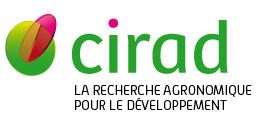Haplotype reconstruction attempt to characterize structural variations in heterozygous banana genomes
Martin G., Hervouet C., Ricci S., Lemainque A., Baurens F.C., D'Hont A.. 2018. In : Abstract Book DynaGev 2018. Rennes : INRA, 1 p.. Colloque annuel DynaGeV : Dynamique des gûˋnomes vûˋgûˋtaux. 4, 2018-06-21/2018-06-22, Rennes (France).
Inter(sub)specific hybridizations are frequent events in plants and represent key factors in the evolution and domestication of many crops. Banana is one of such crop plants where domesticated cultivars result from hybridization events between Musa acuminata (2n=2x=22, A genome) subspecies and sometimes with Musa balbisiana (2n=2x=22, B genome). These species and subspecies diverged following geographical isolation in Southeast Asian continental regions and islands. Plant movement fostered by human migrations lead to inter(sub)specific hybridization that generated diploid and triploid hybrids with low fertility. Large chromosomal rearrangements between the species and subspecies are suspected to be involved in this low fertility. Seedless parthenocarpic hybrids were then selected by early farmers and since then dispersed by centuries of vegetative propagation. So far, two large structural variations were observed between Musa acuminata and Musa balbisiana and three large structural variations were identified within Musa acuminata subspecies using a combination of genetic and physical mapping, large insert paired read sequencing and BAC-FISH. Using genetic mapping data and FISH, a fourth structural variation was identified at heterozygous state in several cultivated accessions. However, while we know which chromosomes are implicated in this genome rearrangement, previous methods failed to clarify its exact nature. We will discuss present development based on genetic mapping and partial sequence assembly of an accession having this SV at heterozygous state to reconstruct both haplotypes and access to this new structure.
Documents associûˋs
Communication de congrû´s
Agents Cirad, auteurs de cette publication :
- Baurens Franc-Christophe — Bios / UMR AGAP
- D'Hont Angûˋlique — Bios / UMR AGAP
- Hervouet Catherine — Bios / UMR AGAP
- Martin Guillaume — Bios / UMR AGAP
- Ricci Sebastien — Bios / UMR AGAP
